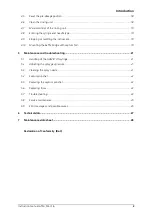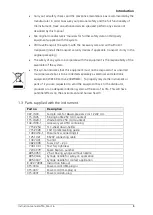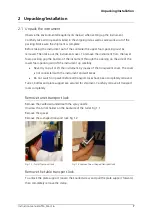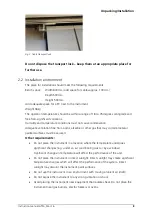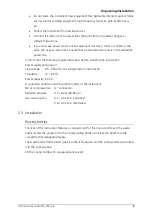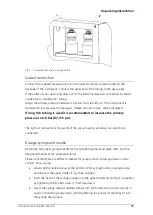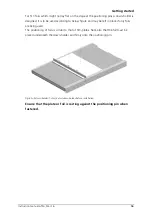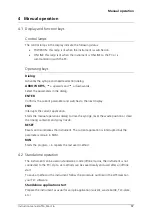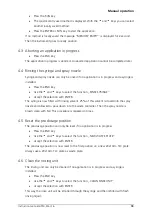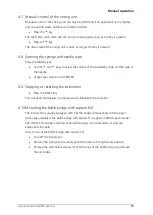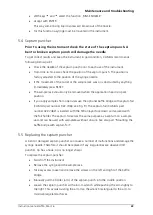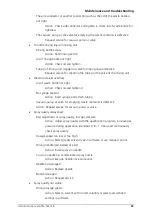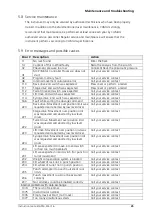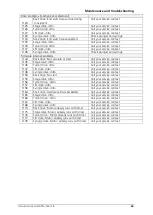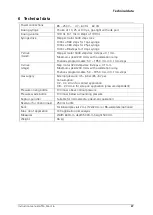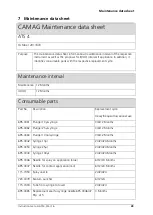
Getting started
Instruction manual ATS4, Mar-16
14
3
Getting started
3.1
Starting the system
Switch on the instrument. The ATS4 will now perform the following checks and tasks:
1. Checking memory for data loss. Parameters (methods) are stored in memory for more
than 7 days.
2. Initializing the syringe drive.
3. Checking gas pressure. In case of low or no pressure an acoustic signal is given and the
message “Please connect to gas” is displayed.
4. Initializing the septum punch.
5. Initializing all other drives.
6. Finally the application head is moving to the waste position. If start-up was successful
the display will show:
** ATS4 **
Instrument ready
In this phase only physical blocking of a drive can cause an error. If necessary, check if all
transport locks have been removed and whether there are unknown objects in the
instrument (for instance below the sample rack).
3.2
Check syringe and needle type
Check if the syringe size and needle type is appropriate for your analysis method.
If not, change the syringe and/or needle and adjust the instrument according chapter 2.3
point “Dosage syringe and needle”.
3.3
Loading the waste plate
Prior to application of a sample the application head moves to a position on the waste
plate in order to pre-dose by contact or spray-on application. These pre-dosage positions
are 2 mm apart from each other. The waste plate area X: 11 to 189 mm and Y: 11 to 89
mm is used which results in 3600 pre-dosing positions on each 20x10 plate. Each time
prior to an application the system checks how many positions are still available. If
necessary a warning is displayed. When you tell the software that a new waste plate was
loaded the waste position is reset.
Positioning of the waste plate is achieved by pressing down the left stage. A 20x10 cm
plate should always be used.
Summary of Contents for ATS 4
Page 1: ...INSTRUCTION MANUAL AUTOMATIC TLC SAMPLER 4...
Page 31: ......



